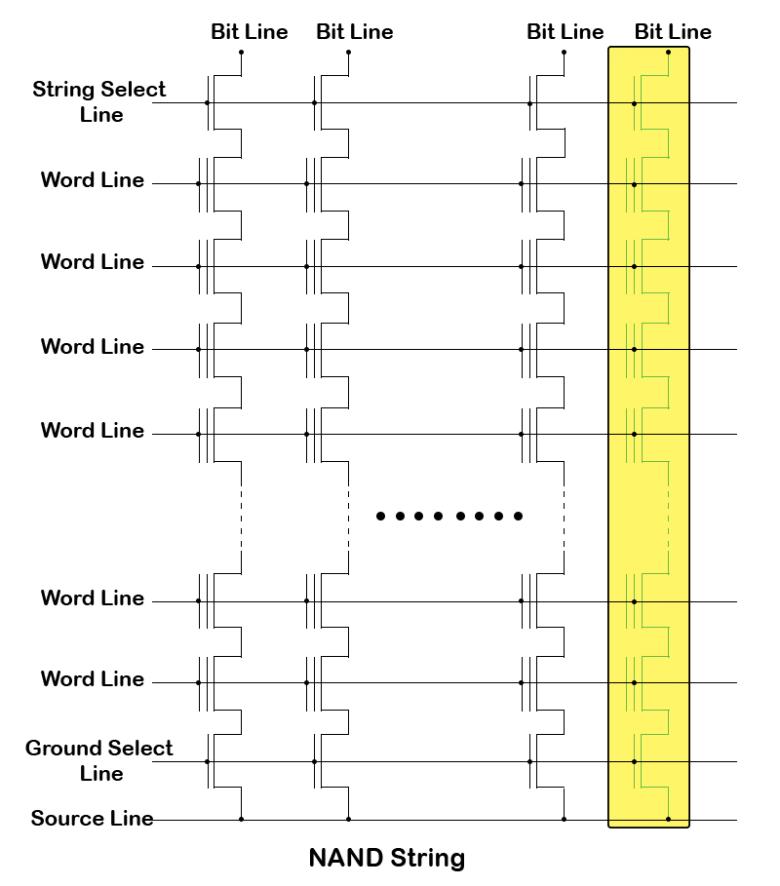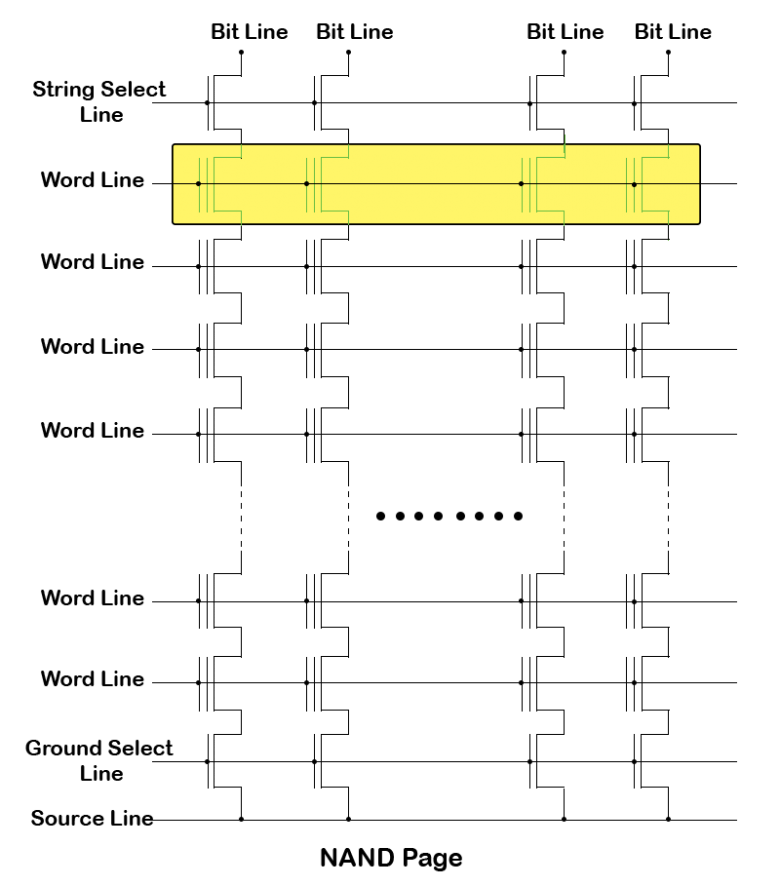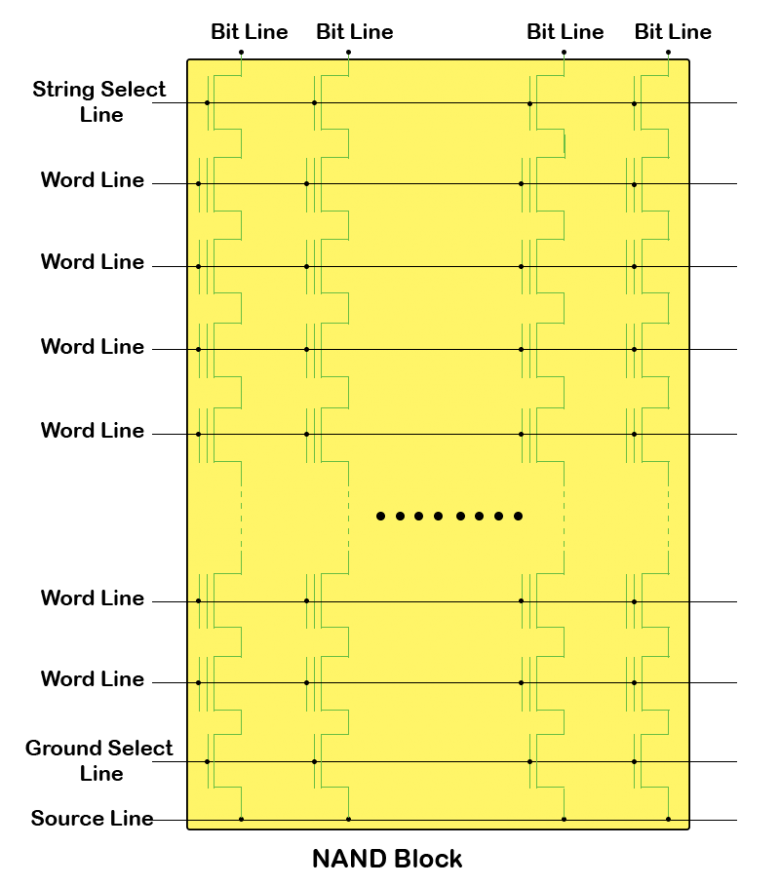Solid State Drive Primer # 4 - NAND Architecture - Pages & Blocks
![]() The previous solid state drive primers focused on the individual NAND Cell, NAND strings and arrays. This article digs deeper into arrays and builds up to the page and blocks of NAND flash.
The previous solid state drive primers focused on the individual NAND Cell, NAND strings and arrays. This article digs deeper into arrays and builds up to the page and blocks of NAND flash.
For a quick review, single NAND flash cells individually storing a single bit of 0 or 1 are joined together in strings and arrays to form much larger data storage structures. These strings are connected to allow storage and retrieval of data from selected cells. Very large data storage devices are made possible by adding more and more NAND cells to the array.
The NAND Flash String:

Strings (shown as columns) are the minimum unit to read and are typically comprised of 32 or 64 NAND cells. All strings in the array are connected at one end to a common Source Line (SL) and at the other end to the Bit Line (BL).
Each string also contains two control mechanisms in series with the NAND cells. String and ground select transistors are connected to the String Select Line (SSL) and Ground Select Line (GSL).
The NAND Flash Page:

Pages (shown as rows) share the same word line and are the minimum unit to program. They are typically comprised of at least 32,768 NAND cells, with many of the newer NAND devices have page sizes of 64K or 128K cells.
Most page sizes are referred to as 2K, 4K, 8K, etc. This signifies the page size in bytes. So if the page size has 32,768 NAND Cells (bits), this equates to 4096 bytes or 4K Page size.
The NAND Flash Block:

A block is a 2-dimensional matrix comprised of pages (rows) and strings (columns). The total number of bits in a block can be calculated by multiplying the number of strings by the number of pages.
From a Micron presentation at the 2014 Flash Memory Summit, maximum Pages per Block are approaching 512 and Block sizes are reaching up to 8 Mbytes.
Contact a Cactus Technologies Expert if you would like to discuss in more detail.






